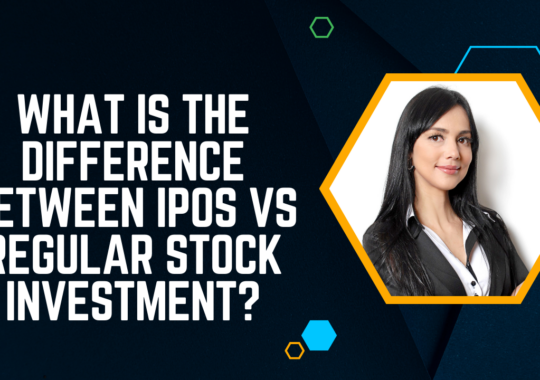If you’re a trader looking for an effective technical analysis tool to help you identify overbought and oversold market conditions, the Stochastic Oscillator might be just what you need. The Stochastic Oscillator is a momentum indicator that has been used by traders for decades to measure the strength of a trend and determine potential reversal points. In this guide, we’ll provide you with a comprehensive overview of the Stochastic Oscillator, covering everything you need to know to use this tool effectively in your trading.
But to use the Stochastic Oscillator effectively, it’s important to understand its underlying concepts and to know how to interpret its signals. There are different ways to use the Stochastic Oscillator, such as to identify overbought or oversold conditions, to confirm trend direction, and to generate buy and sell signals. It’s also essential to understand how to set the period and smoothing parameters to match your trading style and the market conditions.
Get to know What are patterns in trading and why should you be aware of them?

In this guide, we’ll cover all the essentials of the Stochastic Oscillator, including how to calculate it, how to interpret its signals, and how to use it in your trading strategies. Whether you’re a beginner or an experienced trader, our goal is to equip you with the knowledge and tools you need to understand and use the Stochastic Oscillator with confidence.
So, let’s get started!
What is a Stochastic Oscillator?
The Stochastic Oscillator is a practical analysis interpreter that computes the momentum of an asset’s price movement. It compares the closing price of an asset to the price ranging over a definite time period, typically 14 periods, and produces a line that oscillates between 0 and 100. The Stochastic Oscillator is often used to identify potential overbought and oversold circumstances in the market, which can be an indication that a price reversal is imminent.
The Stochastic Oscillator can be a valuable tool for traders, as it can help them to identify potential entry and exit points for their trades. When the Stochastic Oscillator line reaches or exceeds the 80 mark, it may indicate that the asset is overbought, meaning that there is a high likelihood of a price decline in the near future. Conversely, when the Stochastic Oscillator line reaches or falls below the 20 mark, it may indicate that the asset is oversold, meaning that there is a high likelihood of a price increase in the near future. By using the Stochastic Oscillator in co-occurrence with other technical indicators and risk management techniques, traders can make more informed trading decisions and improve their chances of success in the market.
Here are a few ways traders can use the Stochastic Oscillator to trade better
- Identifying overbought and oversold conditions: The Stochastic Oscillator helps traders to spot when a security is overbought or oversold. When the oscillator is above 80, it’s regarded as overbought, while a reading below 20 indicates oversold circumstances. These levels can be used to help traders make buy or sell decisions.
- Finding potential trend reversals: When the Stochastic Oscillator diverges from the price action, it can signal a potential trend reversal. For example, if the price of a security is making new highs while the Stochastic Oscillator is making lower highs, it can indicate that the upward momentum is slowing down, potentially leading to a trend reversal.
- Using the cross-over of the two lines: The Stochastic Oscillator has two lines: %K and %D. The %K line represents the current price relative to the high and low range of the past few periods, while the %D line is a moving average of the %K line. When the %K line crosses above the %D line, it can be a bullish signal, while a cross below can be bearish.
- Confirmation of price action: The Stochastic Oscillator can be used to confirm price action. For example, if a security is making new highs and the Stochastic Oscillator is also making new highs, it can confirm the strength of the upward trend. Conversely, if a security is making new lows and the Stochastic Oscillator is also making new lows, it can confirm the strength of the downward trend.
- Timing entry and exit points: The Stochastic Oscillator can be used to help traders time entry and exit points. For example, if a security is oversold and the Stochastic Oscillator has just crossed above the oversold level, it can be a buy signal. Similarly, if a security is overbought and the Stochastic Oscillator has just crossed below the overbought level, it can be a sell signal.
Calculation of Stochastic Oscillator
The Stochastic Oscillator is computed by the formula:
%K = (latest Close – Lowest Low) / (Highest High – Lowest Low) * 100
%D = 3-day Simple Moving Average of %K
Interpretation of Stochastic Oscillator:
The Stochastic Oscillator is used to spot potential fashion reversals and generate buy and sell signals. The interpretation of the Stochastic Oscillator is based on two lines: %K as well as %D. %K is the main line, and %D is a signal line that is used to smooth out the volatility of %K.
When %K rises above %D, it is considered a buy signal, and when %K falls below %D, it is considered a sell signal. When the Stochastic Oscillator is above 80, it is regarded as overbought, and when it is below 20, it is regarded as oversold. These levels can be used to identify potential trend reversals.
Application of Stochastic Oscillator
The Stochastic Oscillator is used by traders to generate buy and sell signals and identify potential trend reversals. It can also be used to confirm the strength of a trend and identify potential price breakouts. The Stochastic Oscillator can be used on any financial instrument, including stocks, bonds, commodities, and currencies.
Also read:
Here’s why trading indices could suit novice traders
Best Trading Apps For Beginners
FAQs
What is the significance of the overbought and oversold levels on the Stochastic Oscillator?
The overbought and oversold levels on the Stochastic Oscillator represent potential reversal points in the price trend. When the indicator reaches the overbought level, it suggests that the asset may be overvalued and due for a price decline. Conversely, when the indicator reaches the oversold level, it suggests that the asset may be undervalued and due for a price increase.
Can the Stochastic Oscillator be used for all financial instruments?
The Stochastic Oscillator can be used for a wide range of financial instruments, including stocks, bonds, currencies, commodities, and futures.
How can the Stochastic Oscillator be used to identify potential trend reversals?
The Stochastic Oscillator can be used to identify potential trend reversals by looking for divergences between the price trend and the indicator trend. If the price is making higher highs but the Stochastic Oscillator is making lower highs, it suggests that the upward trend may be losing momentum and could soon reverse.
Can the Stochastic Oscillator be used to generate buy and sell signals?
Yes, the Stochastic Oscillator can be used to generate buy and sell signals. When the indicator crosses above the oversold level, it may signal a buy opportunity, and when it crosses below the overbought level, it may signal a sell opportunity.
How can the Stochastic Oscillator be used to manage risk?
The Stochastic Oscillator can be used to manage risk by setting stop-loss orders at key levels, such as the overbought and oversold levels. This can help limit potential losses in case the price moves against the desired position.
Are there any limitations to using the Stochastic Oscillator?
Like any technical indicator, the Stochastic Oscillator has limitations and can produce false signals. It is important to use the indicator in conjunction with other analysis techniques to confirm potential trading opportunities.
How does the Stochastic Oscillator compare to other technical analysis indicators?
The Stochastic Oscillator is a popular technical indicator that is widely used in conjunction with other analysis tools, such as moving averages and trend lines. Its effectiveness may depend on the market conditions and the timeframe being analyzed.
What are the optimal settings for the Stochastic Oscillator?
The optimal settings for the Stochastic Oscillator may vary depending on the trader’s preferences and the financial instrument being analyzed. However, the most commonly used settings are a 14-period %K and a 3-period %D. Traders may experiment with different settings to find the ones that work best for their trading style.
Conclusion
The Stochastic Oscillator is a widely used technical analysis tool that can provide valuable insights into a financial instrument’s momentum and potential reversal points. By analyzing the current price level in relation to its historical price range, the Stochastic Oscillator can help traders identify overbought and oversold conditions, as well as potential trend reversals.
However, like any technical analysis tool, the Stochastic Oscillator is not perfect and should not be relied on exclusively for trading decisions. Traders should use it in conjunction with other technical indicators and fundamental analysis to build a comprehensive trading strategy. Moreover, it is essential to select the appropriate parameters for the Stochastic Oscillator, taking into consideration the financial instrument’s volatility and historical data.
By incorporating the Stochastic Oscillator into their trading strategy, traders can gain valuable insights into market momentum, identify potential reversal points, and make more informed trading decisions.



